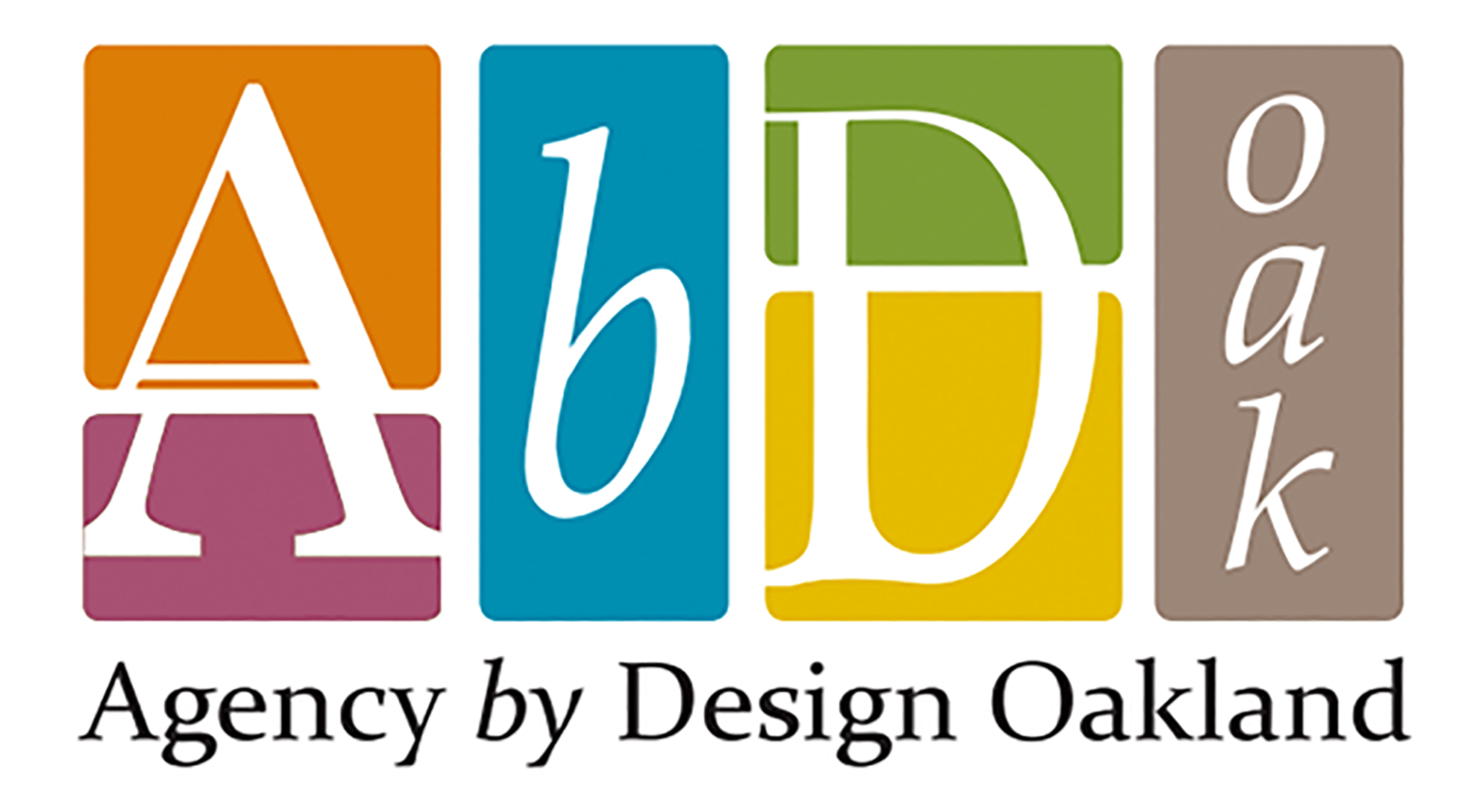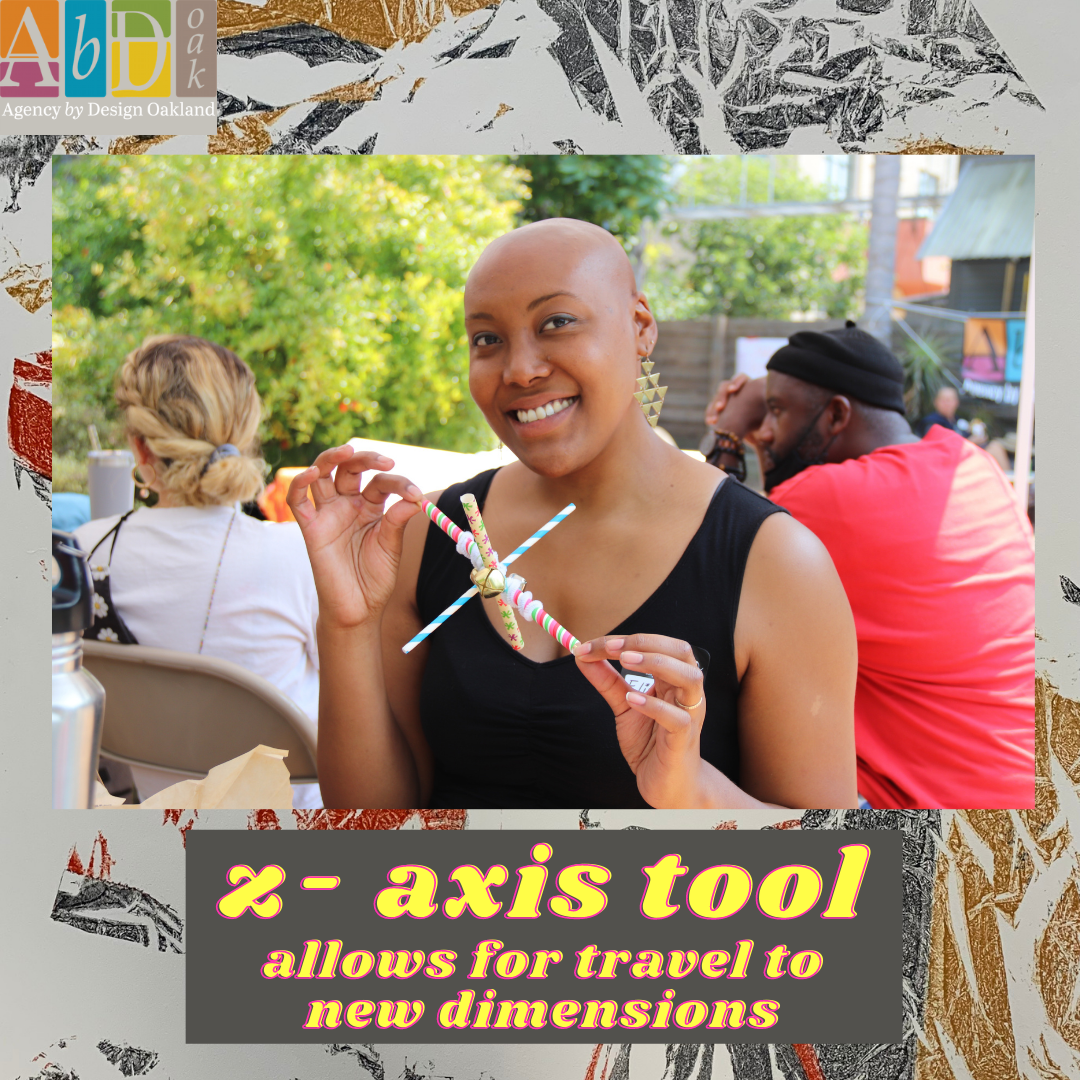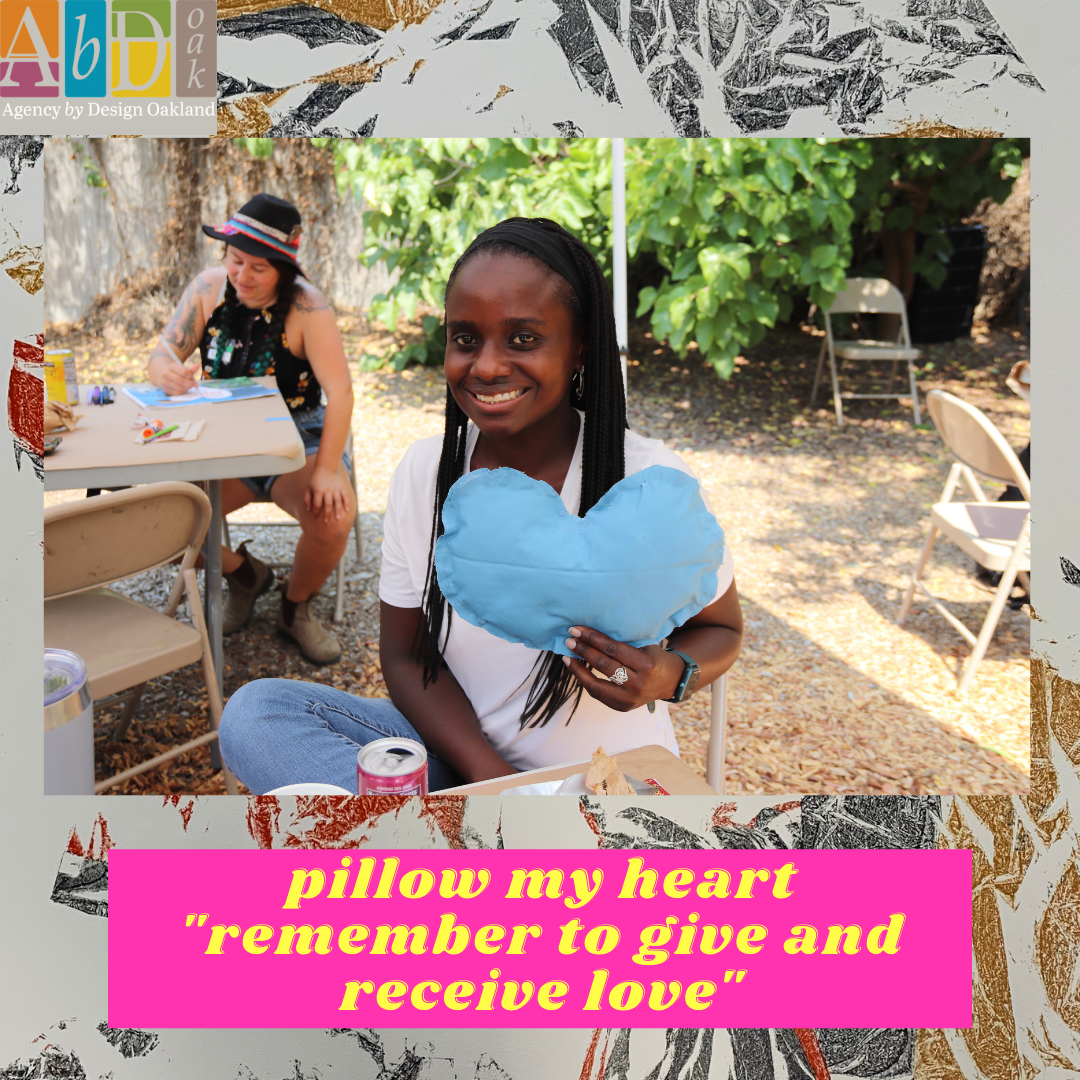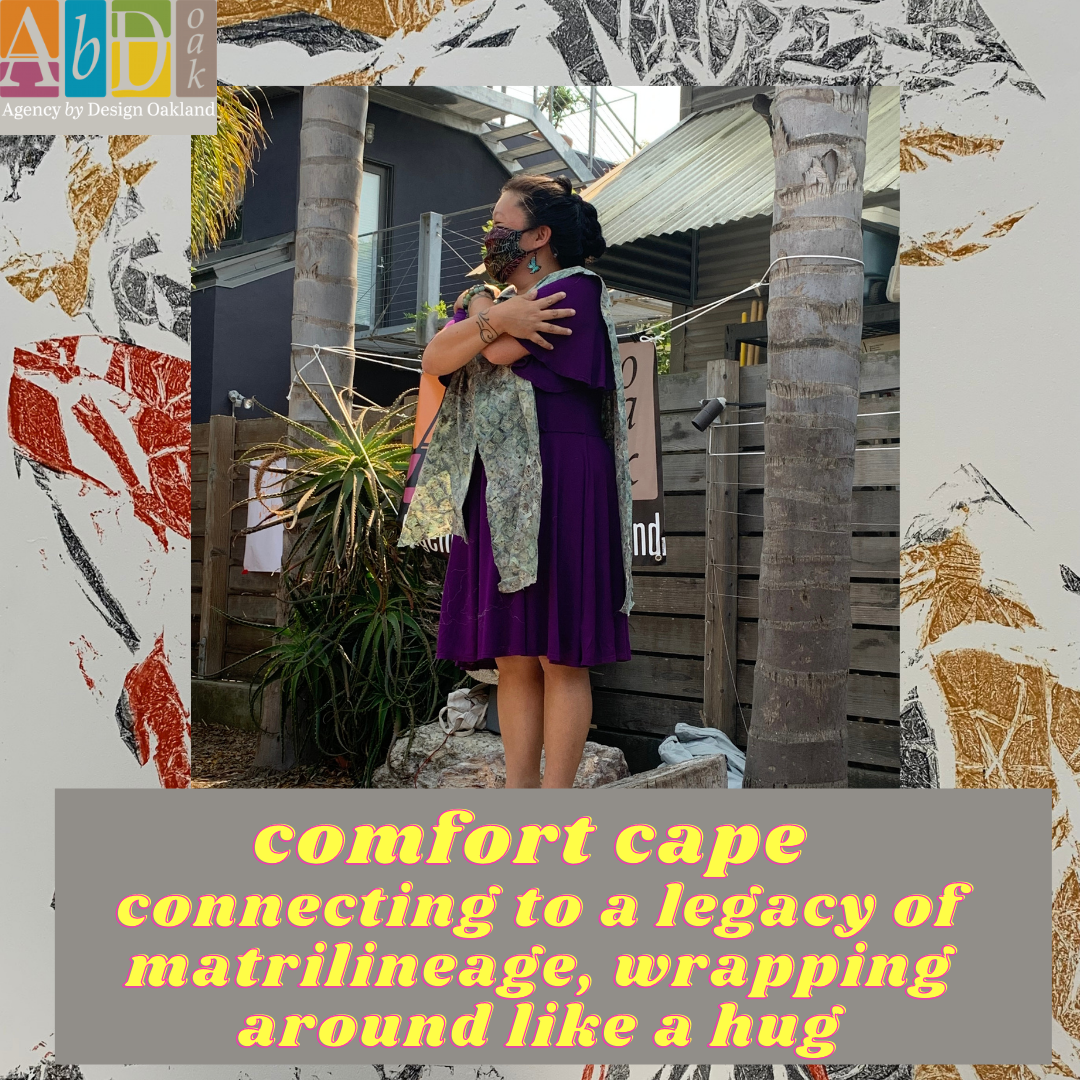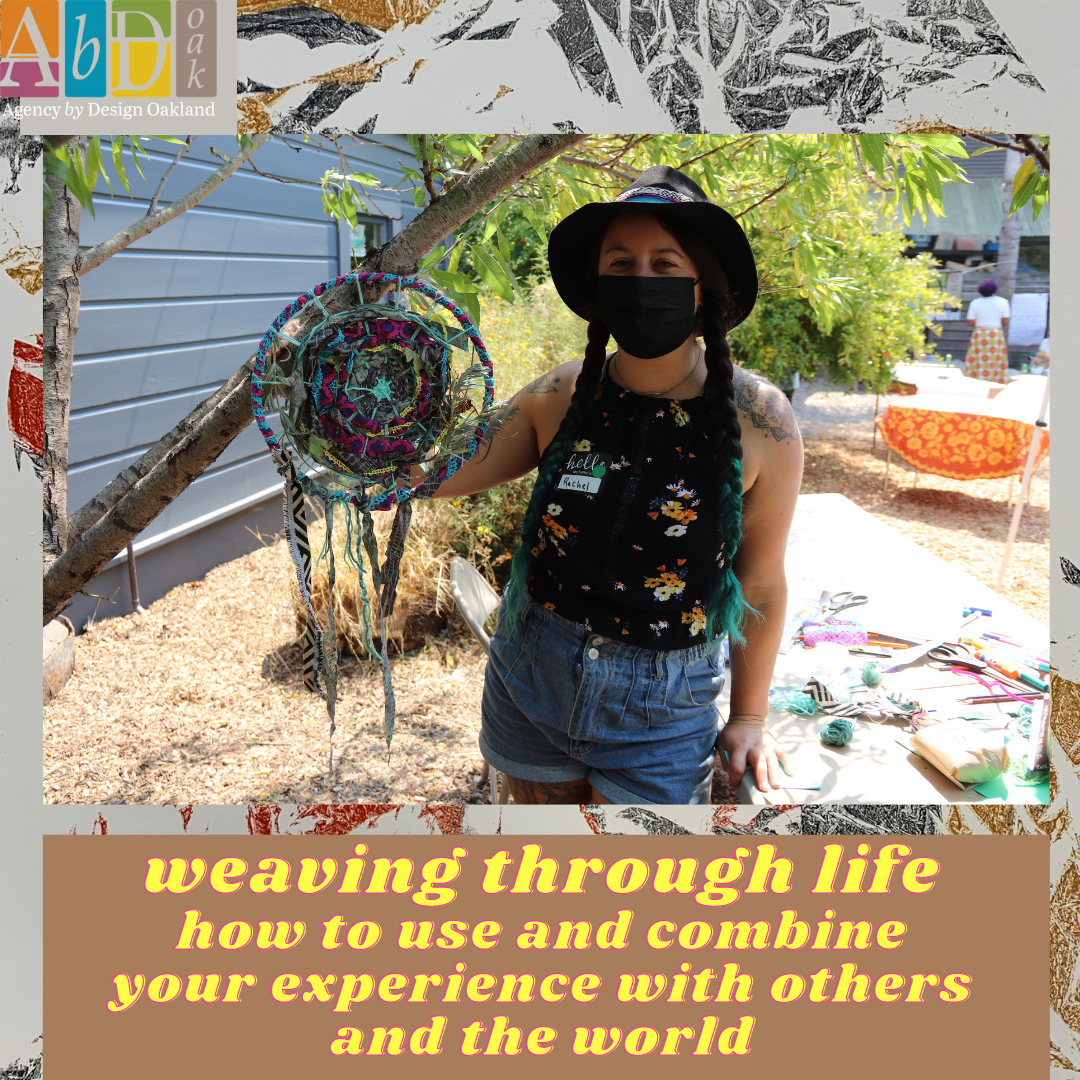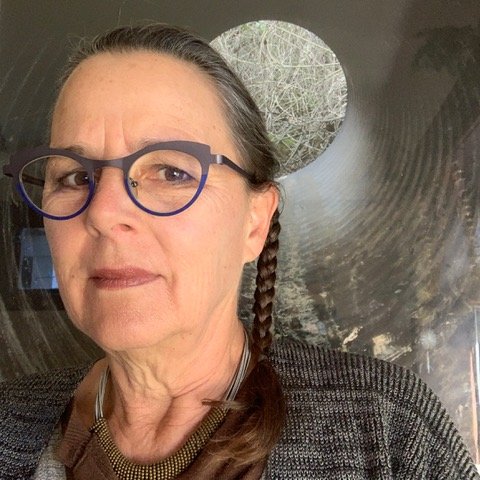By Susan Wolf, Resident Disruptor on the Agency by Design Oakland Fellowship Leadership Team
In the 2020-2021 school year teachers, families and communities were challenged by the experience of rapidly shifting and morphing complexities of teaching and learning. Distance and hybrid landscapes left many of us feeling disembodied and exhausted. Moving into summer I was personally striving to recenter myself and somehow find my way toward a restorative practice. I sat to reflect. This generally takes the form of writing and drawing. I drifted to the language of “pandemic as portal” or perhaps a “puncture,” and tried to find opportunity in that. The metaphor of a doorway that questions space and time is something that has always appealed to me. It speaks of alternatives, transformation and transit, from here to there. Travel beyond the stuck places that invites expansive creative thinking.
Over the summer I opened up a doorway that literally goes nowhere. It is located in my sunporch studio and work-space. I don’t know its full story other than that is where there used to be stairs that would take you into the backyard, now it's just air and a good view of a Jacaranda. It has been closed off because of how tempting we knew it would be for our young son to use in creative and potentially dangerous ways. When my son (now 27 years old) recently visited, I was happy to see him sit in the doorway and dangle his feet.
This doorway helps me think. It lengthens my vista and sends in a breeze. It helps me remember how important it is for me to sit and draw or stitch or write.
Susan looks out from her studio standing in what she calls the door to nowhere or pandemic portal. Wearing a T-shirt designed by Christine Sun Kim. The graphic in sign language says “stop Asian hate.”
“This year and for several years forward our learning spaces will need to move more slowly as we provide welcoming, creative making opportunities for our fully activated reptilian brain to reset.”
As the Agency by Design Oakland leadership team (Paula, Brooke, Susan and Alia) was planning for our day long retreat in August we knew we wanted to support teachers by making intentional connections to the California Initiative for a restorative restart. We wanted teachers to feel cared for but we also wanted them to walk away with ideas on how to care for and love their students. Art and making have an important role to play in healing and meaning making. For us, we clearly envisioned an open-ended inquiry or invitation, aka a Design Challenge, with a wide variety of materials available. Time for making that values individual voices and spirits while inviting space for dreaming creatively of the world we see coming. AKA The Radical Imaginary!
I first heard the term Radical Imaginary from a Claudia Rankine book about a project that began in 2017 as an open letter inviting essays about race and the creative imagination. A website continues to host ongoing dialogue and performances. https://theracialimaginary.org/. However, this thinking does not stand alone. Other writers contributing to this idea of inviting and holding cultural change with divergent thinking and dreaming, include Octavia Butler, adrienne maree brown and June Jordan. Larger, cultural manifestations of the radical imaginary are held by Afrofuturism and National Equity Project’s protocols for Freedom Dreaming.
Locally, for us in the Bay Area, we are fortunate to be close to cultural institutions that are exhibiting work that documents and holds radical imagination in interesting ways. After spending over a pandemic year away from museums and exhibition spaces I celebrated a return to several to see evidence of creative practice, making and radical imagination. If you are nearby I highly recommend visiting:
Oakland Museum of California Mothership: Voyage Into Afrofuturism
Legion of Honor Wangechi Mutu: I Am Speaking, Can You Hear Me?
Berkeley Art Center Afro Hippie Preview — Berkeley Art Center
KALA Art Institute Sea of Fertility - Looking at the Invisible
You might wonder what radical imaginary has to do with being educators and why it is important to evoke our individual and collective radical imagination now. While experiencing a dramatic shifting of values and systems within our pandemic response the subtle cracks and fissures have become conspicuous, unavoidable chasms. We don’t need anyone to tell us how the system of educating our youth is beyond broken. White supremacy continues to recreate and uphold these inequities. It is not unintentional. This year and for several years forward our learning spaces will need to move more slowly as we provide welcoming, creative making opportunities for our fully activated reptilian brain to reset. It is a time in which we need to stretch and dream to be able to see beyond the mire into a future that will work better for our students.
During our daylong retreat in September it was important to us to model what a restorative restart might look and feel like. It was important to us for there to be time to envision and make with our hands something personal that could be useful for our collective processing. It was important to us to be making, in community in an outdoor space, wearing our masks while smiling with our eyes.
The Design Challenge prompt asked the teachers in the fellowship to:
Create a magical object that transforms and heals what ails you.
Envisioning and Figuring it out: Abdul-Haq Khalifah using hot melt glue to attach wooden and metal pieces, and Mx. Cory figuring out how to use a sewing machine to piece together fabric.
During this time we noticed teachers finding materials that spoke to them and finding their happy places to work. There was a choice. Working indoors or outdoors. Sitting on the ground or around tables. In the sunshine or shade. Some worked independently, quietly, focused upon their making. Others collected on blankets or tables and were busy talking, sometimes laughing. We also noticed the makers who drifted from place to place to see what others were doing, to both get inspired and to visit.
This is what it looked like:
Elisabeth Barnett, Secondary Math & History, Community Day School
The Z-Axis tool allows for travel to new dimensions. Changing and rotating in response to how it is held.
Deirdra McKnight, 2nd grade, Lazear Charter Academy/Education for Change
Stuffed fiber Pillow My Heart is a visual reminder to give and receive love.
Mx. Cory, 6th Grade Humanities (History & English), Urban Promise Academy
Comfort Cape, fabricated using a sewing machine; wraps around like a hug and connects to the wearer's legacy of matrilineage.
Rachel Abramson, International Science, Castlemont HIGH SCHOOL
Weaving through life, How to use and combine your experience with others and the world.
After walking the runway to hoots, snaps and cheers, fellows transitioned to planning time.
How can we cultivate a restorative restart through hands-on learning?
What Maker Centered Learning strategies will you try?
What will they prototype and test out with students that will then be shared with each other to receive feedback at the next gathering? This is an ongoing practice that supports our inquiry cycle.
A sneak peek of what is being reimagined includes:
At Met West, in Linh Linh Tinh’s Advisory, cardboard looms and fiber for hands-on reflective making following a community circle check-in.
At Urban Promise Academy Mx. Cory’s connects students to community in restorative community circle practice before entering a process designing murals.
Connecting to the maker-centered learning strategy, tools as teachers Andrea Gonzalez, Garfield Elementary teacher is working with student collaboration to make a “squishy school” that you could hug or lay on for comfort. Also helps kids “learn to read and do art.”
Susan Wolf is an artist, caregiver and educator.
“I am always practicing.
How to take care of my spirit and body. How to age gracefully. How to be a good friend, an anti-racist, and advocate for equality and change. And most recently, how to step into a complex dystopian future without losing my heart or mind.”
